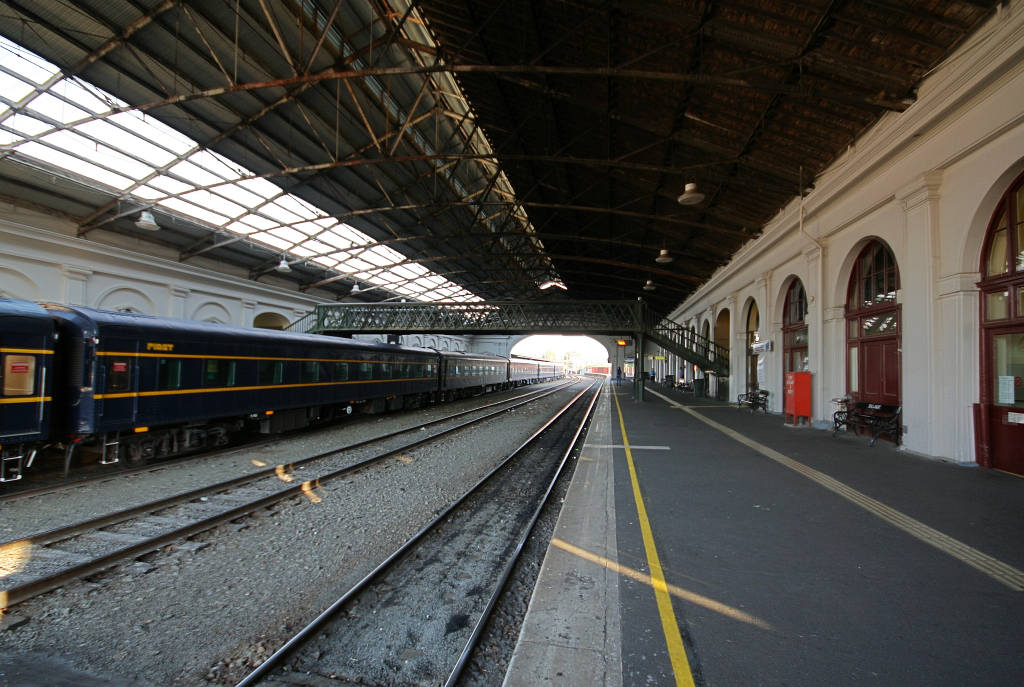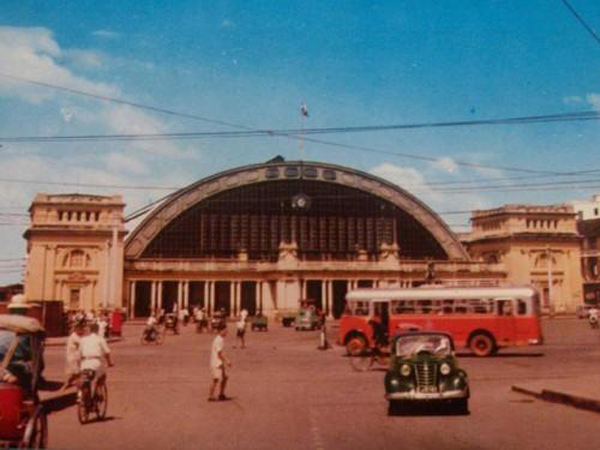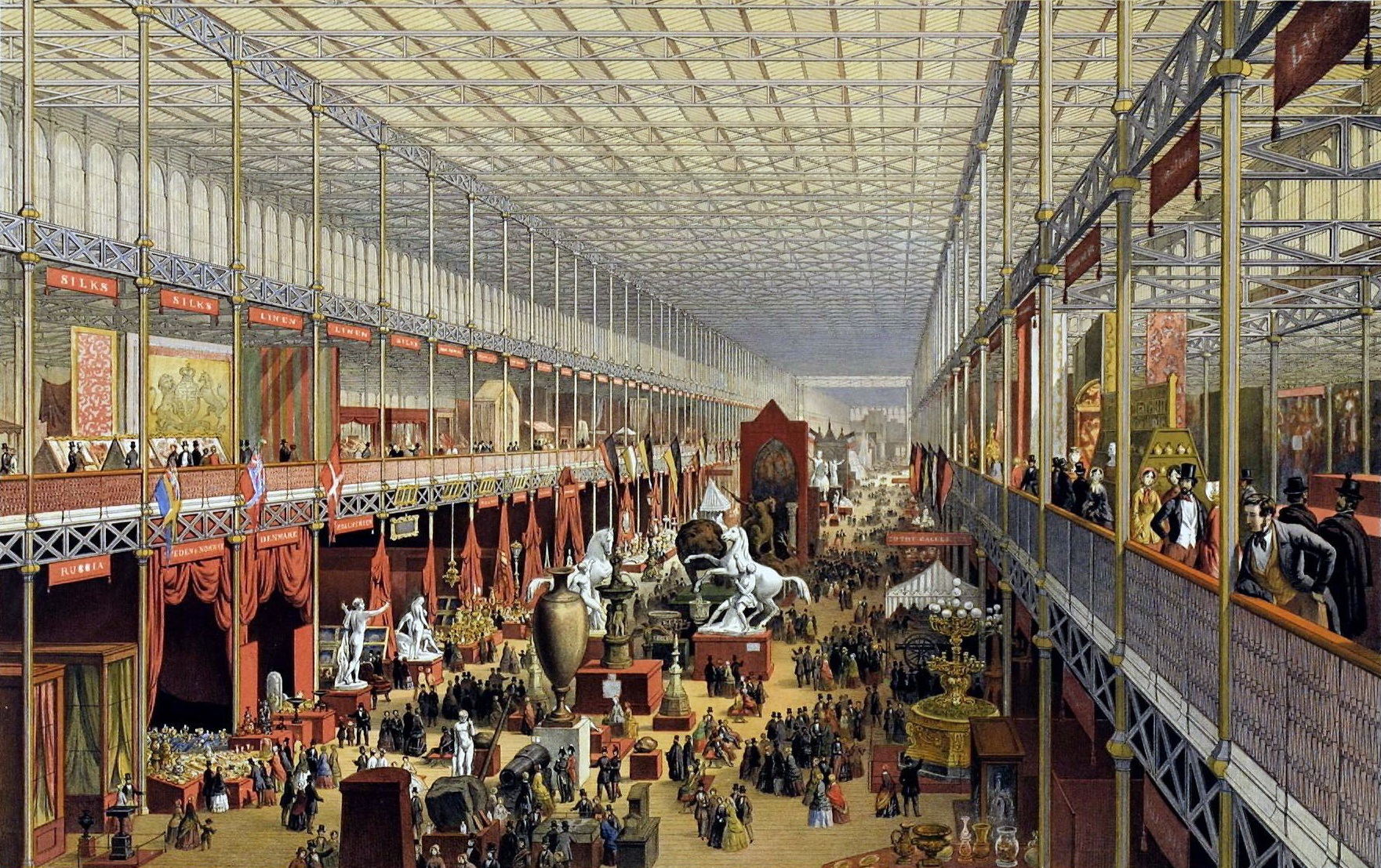|
Train Shed
A train shed is a building adjacent to a station building where the tracks and platforms of a railway station are covered by a roof. It is also known as an overall roof. Its primary purpose is to store and protect from the elements train cars not in use, The first train shed was built in 1830 at Liverpool's Crown Street railway station, Crown Street Station. The biggest train sheds were often built as an arch of glass and iron, while the smaller were built as normal pitched roofs. The train shed with the biggest single span ever built was that at the second Broad Street Station (Philadelphia), Philadelphia Broad Street Station, built in 1891. Types of train shed Early wooden train sheds The earliest train sheds were wooden structures, often with unglazed openings to allow smoke and steam to escape. The oldest part of Bristol Temple Meads railway station, Bristol Temple Meads is a particularly fine – and large – example, designed by Isambard Kingdom Brunel with mock-ha ... [...More Info...] [...Related Items...] OR: [Wikipedia] [Google] [Baidu] |
Bristol Temple Meads Railway Station Train-shed Engraving
Bristol () is a City status in the United Kingdom, cathedral city, unitary authority area and ceremonial county in South West England, the most populous city in the region. Built around the River Avon, Bristol, River Avon, it is bordered by the ceremonial counties of Gloucestershire to the north and Somerset to the south. The county is in the West of England combined authority area, which includes the Greater Bristol area (List of urban areas in the United Kingdom, eleventh most populous urban area in the United Kingdom) and nearby places such as Bath, Somerset, Bath. Bristol is the second largest city in Southern England, after the capital London. Iron Age hillforts and Roman villas were built near the confluence of the rivers River Frome, Bristol, Frome and Avon. Bristol received a royal charter in 1155 and was historic counties of England, historically divided between Gloucestershire and Somerset until 1373 when it became a county corporate. From the 13th to the 18th centur ... [...More Info...] [...Related Items...] OR: [Wikipedia] [Google] [Baidu] |
Thurso Railway Station
Thurso railway station is a railway station located in Thurso, in the Highland council area in the far north of Scotland. It serves the town and its surrounding areas, along with ferry services linking the mainland with Stromness on the Orkney Islands. The station, opened in 1874 by the Sutherland and Caithness Railway, is the terminus of a branch line off the Far North Line. It is not the terminus for passenger services on the line, which instead extend to Wick. It is the northernmost station on mainland Britain's National Rail network and is managed by ScotRail, which operates all services to the station. Location and facilities The station is situated at the end of a short branch line off the Far North Line. It is down the line from the start of the branch at , and from . Thurso has a single platform, which is long enough to accommodate a nine-carriage train. It is fully wheelchair-accessible and has a part-time ticket office. There is also a small car park, waiting room ... [...More Info...] [...Related Items...] OR: [Wikipedia] [Google] [Baidu] |
Brighton Railway Station
Brighton railway station is the principal station serving the city of Brighton in Brighton and Hove, East Sussex, England, operated by Govia Thameslink Railway. It is the southern terminus of the Brighton Main Line, the western terminus of the East Coastway line, East Coastway Line and the eastern terminus of the West Coastway line, West Coastway Line. It is from via . The station was built by the London & Brighton Railway in 1840–41, initially only connecting Brighton to Shoreham-by-Sea, westwards along the coast, in May 1840. In September 1841, it was connected inland to Haywards Heath railway station, Haywards Heath and London Bridge railway station, London Bridge via the new Clayton Tunnel; then in 1846 to the county town of Lewes to the east via the London Road Viaduct. The railway became the London, Brighton & South Coast Railway in 1846 following mergers with other railways with lines between Portsmouth and Hastings. With 14.5 million passenger entries and exi ... [...More Info...] [...Related Items...] OR: [Wikipedia] [Google] [Baidu] |
Barcelona Estació De França
Barcelona ( ; ; ) is a city on the northeastern coast of Spain. It is the capital and largest city of the Autonomous communities of Spain, autonomous community of Catalonia, as well as the second-most populous municipality of Spain. With a population of 1.6 million within city limits,Barcelona: Población por municipios y sexo – Instituto Nacional de Estadística. (National Statistics Institute) its urban area extends to numerous neighbouring municipalities within the province of Barcelona and is home to around 5.3 million people, making it the list of urban areas in the European Union, fifth most populous urban area of the European Union after Paris, the Ruhr area, Madrid and Milan. It is one of the largest metropolises on the Mediterranean Sea, located ... [...More Info...] [...Related Items...] OR: [Wikipedia] [Google] [Baidu] |
Bangkok Railway Station
Bangkok (Hua Lamphong) railway station (, ) is a list of railway stations in Thailand, railway station in Pathum Wan district, Pathum Wan, the former central station, central passenger terminal in Bangkok and the former railway hub of Thailand. It is in the center of the city in the Pathum Wan district, and is operated by the State Railway of Thailand (SRT). Long distance trains moved to the new central station at Krung Thep Aphiwat Central Terminal in 2023. Naming The station was officially referred to by the State Railway of Thailand as Bangkok railway station or ''Sathani Rotfai Krung Thep'' (สถานีรถไฟกรุงเทพ) in Thai. Hua Lamphong () was originally the informal name of the station, used by locals, tourist guides and the public press. In all documents published by the State Railway of Thailand (such as train tickets, timetables, and tour pamphlets) the station is uniformly transcribed as Krungthep (กรุงเทพ) in Thai. As of 19 Janua ... [...More Info...] [...Related Items...] OR: [Wikipedia] [Google] [Baidu] |
Bath Green Park Railway Station
Green Park railway station is a former railway station in Bath, Somerset, England. For most of its life, it was known as Bath Queen Square. Architecture and opening Green Park station was opened in 1870 as the terminus of Midland Railway, Midland Railway's Mangotsfield and Bath Branch Line. The station buildings were designed by the Midland Railway architect John Holloway Sanders. It was built in an elegant style which blends well with the Georgian architecture, Georgian buildings around it and includes a vaulted glass roof in a single-span wrought iron arch structure. The platform accommodation in the station was modest, having an arrival platform and a departure platform, with two sidings between them. The siding adjacent to the arrival platform was equipped with ground frame points to release an arriving train engine. The station is on the north bank of the River Avon, Bristol, River Avon. The locomotive shed was about half a mile from the station to the north side of t ... [...More Info...] [...Related Items...] OR: [Wikipedia] [Google] [Baidu] |
Amsterdam Centraal
Amsterdam Centraal station ( ; abbreviation: Asd) is the largest railway station in Amsterdam, North Holland, the Netherlands. A major international railway hub, it is used by 192,000 passengers a day, making it the second busiest railway station in the country after Utrecht Centraal and the most visited Rijksmonument of the Netherlands. National and international railway services at Amsterdam Centraal are provided by NS (Nederlandse Spoorwegen), the principal rail operator in the Netherlands. Amsterdam Centraal is the northern terminus of Amsterdam Metro routes 51, 53, 54, and stop for 52 operated by municipal public transport operator GVB. It is also served by a number of GVB tram and ferry routes as well as local and regional bus routes operated by GVB, Connexxion and EBS. Amsterdam Centraal was designed by Dutch architect Pierre Cuypers and opened in 1889. It features a Gothic, Renaissance Revival station building and a cast iron platform roof spanning approximately ... [...More Info...] [...Related Items...] OR: [Wikipedia] [Google] [Baidu] |
Cathedral
A cathedral is a church (building), church that contains the of a bishop, thus serving as the central church of a diocese, Annual conferences within Methodism, conference, or episcopate. Churches with the function of "cathedral" are usually specific to those Christian denominations with an episcopal hierarchy, such as the Catholic Church, Catholic, Eastern Orthodox Church, Eastern Orthodox, Anglicanism, Anglican, and some Lutheranism, Lutheran churches.''New Standard Encyclopedia'', 1998 by Standard Educational Corporation, Chicago, Illinois; page B-262c. Church buildings embodying the functions of a cathedral first appeared in Italy, Gaul, Spain, and North Africa in the 4th century, but cathedrals did not become universal within the Western Catholic Church until the 12th century, by which time they had developed architectural forms, institutional structures, and legal identities distinct from parish churches, monastery, monastic churches, and episcopal residences. The cathedra ... [...More Info...] [...Related Items...] OR: [Wikipedia] [Google] [Baidu] |
The Great Exhibition
The Great Exhibition of the Works of Industry of All Nations, also known as the Great Exhibition or the Crystal Palace Exhibition (in reference to the temporary structure in which it was held), was an international exhibition that took place in Hyde Park, London, from 1 May to 15 October 1851. It was the first in a series of world's fairs, exhibitions of culture and industry that became popular in the 19th century. The event was organised by Henry Cole and Prince Albert, husband of Victoria, Queen of the United Kingdom. Famous people of the time attended the Great Exhibition, including Charles Darwin, Karl Marx, Michael Faraday (who assisted with the planning and judging of exhibits), Samuel Colt, members of the Orléanist royal family and the writers Charlotte Brontë, Charles Dickens, Lewis Carroll, George Eliot, Alfred Tennyson, and William Makepeace Thackeray. The future Arts and Crafts proponent William Morris, then a teenager, later said he refused to att ... [...More Info...] [...Related Items...] OR: [Wikipedia] [Google] [Baidu] |
The Crystal Palace
The Crystal Palace was a cast iron and plate glass structure, originally built in Hyde Park, London, to house the Great Exhibition of 1851. The exhibition took place from 1 May to 15 October 1851, and more than 14,000 exhibitors from around the world gathered in its exhibition space to display examples of technology developed in the Industrial Revolution. Designed by Joseph Paxton, the Great Exhibition building was long, with an interior height of , and was three times the size of St Paul's Cathedral. The 293,000 panes of glass were manufactured by the Chance Brothers. The 990,000-square-foot building with its 128-foot-high ceiling was completed in thirty-nine weeks. The Crystal Palace boasted the greatest area of glass ever seen in a building. It astonished visitors with its clear walls and ceilings that did not require interior lights. It has been suggested that the name of the building resulted from a piece penned by the playwright Douglas Jerrold, who in July 1850 wro ... [...More Info...] [...Related Items...] OR: [Wikipedia] [Google] [Baidu] |









